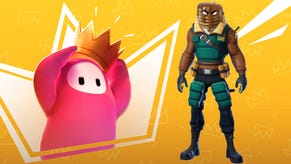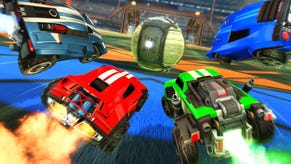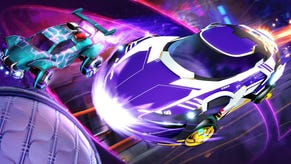Rocket League: The long road to overnight success
Driving header.
It's the kind of stunt a beleaguered producer at Top Gear might, in a flash of inspiration, devise over a steak dinner: "I've got it! Football, but, wait for it, played with cars!" The joke works because cars are not designed to spin on a heel and change direction mid-sprint. They cannot, typically, leap, salmon-like, into a diving header. The angled bodywork of a sedan does not encourage predictable rebounds or strikes. On the football pitch, a vehicular head-on-collision will likely result in more than a mere crimson card. And yet, as Rocket League, the smash hit car-footie video game of the summer, of which more than 200 million matches have been played by six million players since July, demonstrates, from these physical limitations wonderful opportunity arises.
Indeed, for the game's Californian creator Psyonix, the game has become a serious business. Since Rocket League's launch July the studio has been courted with movie proposals, plans for television series, pitches from toy manufacturers and endless, endless merchandising opportunities. Its success has enabled the studio to fulfil its dream of transitioning from a work-for-hire outfit to, as founder Dave Hagewood puts it, "a truly independent self-funded developer." It has, in other words, changed everything. Even so, Rocket League started as a joke, an Easter Egg that, in its dazzling brilliance, grew to take over the game in which it squatted.
Putting cars in places they shouldn't be has defined Hagewood's career. The designer started out as an amateur modder for Unreal Tournament 2003. His best-known mod was an entirely new game mode, dubbed Onslaught, which added cars and other vehicles to the game. It brought him to the attention of Unreal's developer, Epic Games, who hired him to work for them, bringing the mode to Unreal Tournament 4. "My goal was always to build my own studio, however, so I used that success to start a team of Unreal Engine experts," says Hagewood. Psyonix, as the studio was known, took on contract work to stay afloat, while creating demos in downtime, in search of a homegrown hit, something that, as Hagewood puts it, could become "the next big thing."
Despite the studio's expertise working with the Unreal Engine (Hagewood hired young programmers and artists like himself, most of whom still work at the company in senior positions) for eight years it was a struggle to stay afloat, even though the company usually had "more work than it could handle". At one point Hagewood says that he was forced to sell "everything I owned" in order to pay the studio's bills. "The tough part is getting clients to pay you on time," he says. "I saw a lot of start-ups that had to shut down even though they had lots of work just because they couldn't get paid on time." While keeping up the freelance fight, in the mid-2000s Hagewood and his team developed a demo for a car-battling game. During development, one of the team's level designers dropped a football into the battle arena. The ball swiftly became the primary focus of matches, so the designers went further and added goals. The decision to reposition the game as sport rather than a skirmish was made, not in a boardroom, but by the simple fact that everyone involved spent their time playing the joke mode, rather than the game proper. It was given the unwieldy moniker Supersonic Acrobatic Rocket-Powered Battle-Cars, and, after a brisk development, launched as a PlayStation 3 download title in 2008.
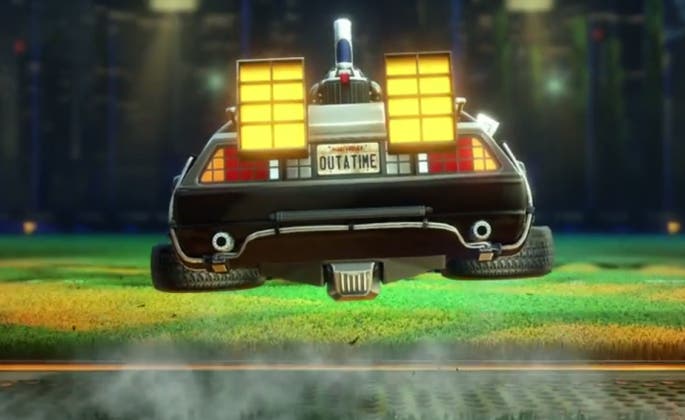
The game, which featured a variety of mini-games and tournaments set within six plainly titled arenas -- Urban, Wasteland, Utopia, Cosmic, Galleon and Stadium -- was downloaded more than 2 million times. This considerable success was not enough to pull Psyonix from the work-for-hire grind, however. "The realities of running a game studio and paying the bills dictated that we develop games for other publishers," explains Jeremy Dunham, one of the studio's senior management team. Nevertheless, the passion, as Dunham puts it, for the project remained, stoked by a small but dedicated community of players, who continued to log in for matches years after the game's release. "They were feeding us a lot of ideas and providing a lot positive reinforcement," says Dunham. "This gave us the sense that it would have been wrong to not go back and give it another shot."
Nevertheless, development of a sequel was a long and drawn out process. For two years between eight and twelve people including Hagewood, who remains a designer at the company, worked on the game depending on availability. Contrary to many sequels, the process soon involved stripping back the original game, rather than supplementing its template. "We tried adding a few power-ups in the early days but it never made the experience better," says Hagewood. "In fact it often hindered the more organic gameplay. So instead we focused on features that would enhance the core experience without changing gameplay." The artists added an explosion whenever a goal was scored, and visual effects for when the cars tear into a supersonic sprint. "I'm a short attention span gamer and I often find newer games to be an overwhelming time investment," he says. "I wanted something more pure and simple to just sit down and play."
The streamlining extended even to the game's title - although this change was forced by a practical restriction rather than a philosophical judgement. "We needed something that didn't push the character limits of digital storefronts," explains Dunham. "Rocket League is easier to say, easier to remember and, basically, fits in the boxes quite nicely. It also shows a bit of maturation for the game. It's more of a serious sport."
The opportunity to launch the game as a free download to PlayStation Plus subscribers was, Hagewood says, a straightforward one, even though doing so limit the amount of revenue a game is able to make in those crucial early days. "If you are trying to establish a new brand I believe it is far more important to get mind-share than revenue," he says. "This can be a tough call because making a new game carries so much risk. You are usually out of budget by the time you get to release." The Rocket League team, who had no budget for marketing, believed they had a game that people would love if only they had a chance to play it. "That was exactly what had happened with the original version seven years ago," he says. "So PlayStation Plus was an ideal route for us. It might not work for everyone though. If you aren't sure you have a 'sticky' game you might need to be more cautious."

Hagewood's instincts proved correct. Word travelled quickly, first via online forums such as Reddit and NeoGAF, then via popular streamers on Twitch and YouTube. When Sony offered it gratis to players, the floodgates opened. The response was far greater than the team had planned for. Servers, which had been allocated based on historical data and estimates provided by Sony, proved insufficient. During the first week the number of simultaneous players peaked at 183,000. "We could have done a lot more had we been better prepared to handle the influx," says Dunham. Indeed, the development team spent the majority of the launch week re-writing the game's net-code to cope with demand.
Unlike the current titans of eSports, which are, to a game, illegible to anyone who doesn't already have an intimate knowledge of the rules, Rocket League is refreshingly easy to understand. In part, that's because it's based on a popular real world sport. Like the best spectator sports, it's also clear when a player pulls off a notable feat, a corner shot from 50 yards away, say, or a spinning header that strikes the ball at the optimal moment, scattering the defenders. And while the game can seem chaotic, there's an obvious and sustained difference between a skilled player and a green newcomer. The selection of cars is level in terms of abilities (unlike MOBA characters, with their arcane strengths and weaknesses) yet there is just enough scope for showboating to allow a talented player to demonstrate their reflexes, skill and talent for anticipation. "I've been playing it for eight years and I can honestly say I am significantly better today than I was even a couple months ago," says Hagewood. Indeed, the team hopes that Rocket League might become something of a more formal eSport. One of their goals is to launch a stadium event in 2016.
As with many video games that appear to be overnight successes, appearances deceive. Rocket League was not the product of a chance alignment of product and distribution method. While circumstance played its role, the game's success is built on graft, failures and colossal risk-taking. "When you start out you have a naive sort of optimism that you're going to be a major hit on your first try," says Hagewood. "Every passing year makes you realise more and more just how unbelievably difficult it is to have a hit video game. That's part of the reason we put so much into the game and then released it for free. We knew we needed every possible advantage. Then, when it became a hit, it was hard to believe that it was real. In some ways I'm still trying to wrap my head around it. It feels too good to be true."
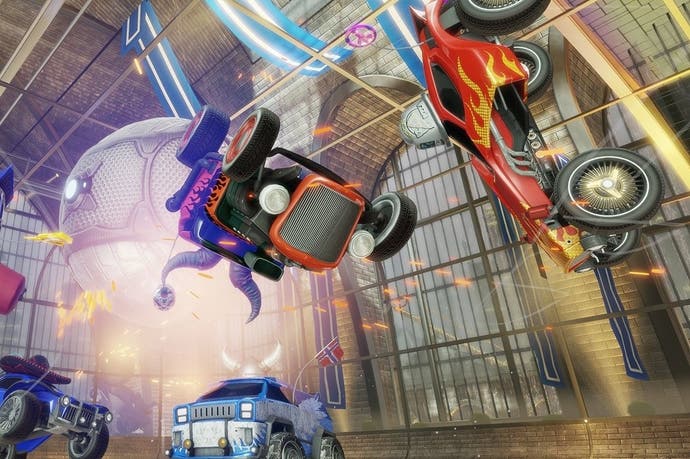


.jpg?width=291&height=164&fit=crop&quality=80&format=jpg&auto=webp)
